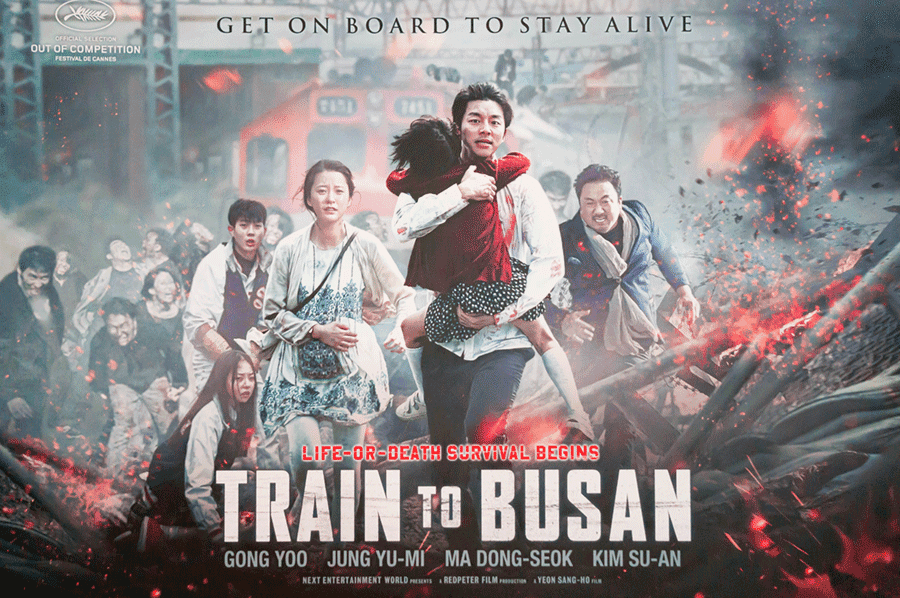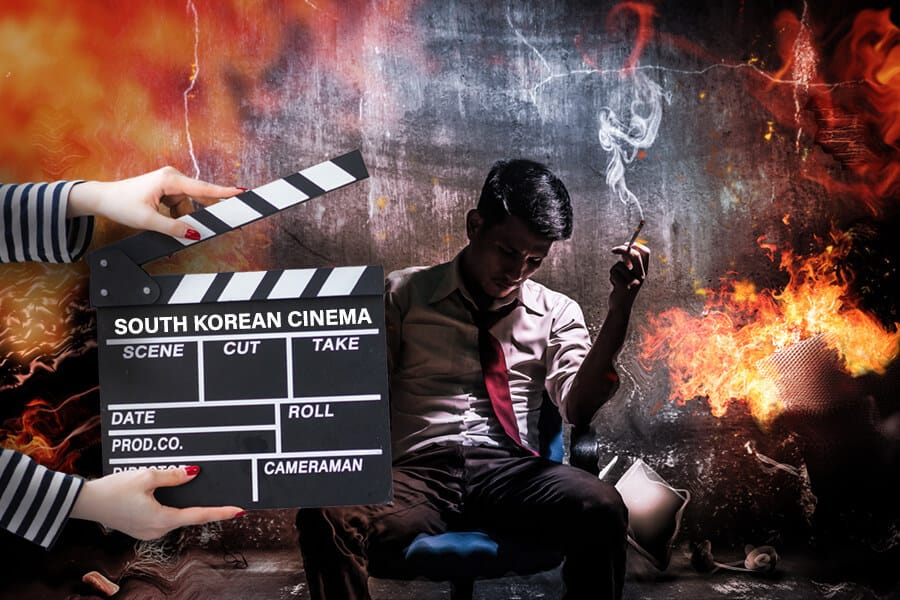We used to see the South Korean cinematography indicated with an admired sign among the contemporary culture. Its content quality rises sharply to the top charts. Here, in South Korea, the directors around the globe come to film their stories and collected pretty good money from premiers. A bit more than twenty years ago production banned by rigid frameworks and undefined politics with the authorities. Once the film industry deprived of taxes or degraded under the censorship, wonder to happen after Japan colony fell apart.
These days Korean directors without fear mix the genres and try more to experience drama with thriller, complete action films with the feeling and emotion. While watching the ordinary Korean plot, you realize the difference. From the one side, calm, but on the other – piercing kind of story develops. The hasty scenery is a kind of democracy trust, a tool to approve the rights for independent culture existing. That is what we love so much about South Korean Cinema.
You no more find another similar technique, although the general plot and characters will be familiar. However, in Korea in 1901 people only started to bring under the cinema. American traveler and director Burton Holmes integrated the on-screen stories into the society. He showed the footage to the Emperor. For two years it had been spread among plebs – at the marketplace Dongdaemun (Seoul). The traditional concepts of theatres established only in 1909. Comparing to the West industry, they had already produced several hundred films at that time.
The times of Japanese settlement
Until 1910, the time of Japan colonization, in Korea there was favor American and European on screens. Japan’s settlement destroyed the chances to create an authentic cinema culture. For the next 35 years, it underwent the rage government requirements. All the money from the box-office transferred to Japan. The earliest cinema Dongdaemun belonged to Korean heritage and locals used it to receive the sources for national production. For almost a decade, the first Korean on-screen presented to the public. In 1919 Dosan Kim directed `ROYAL REVENGE` in cooperation with a cameraman from Japan, as in Korea, it was hard to find the facilities and qualified workers. It combined two kinds of art – theatre and cinema. By the idea, only the background featured, while other actors played in the real-time mode. It became one of the common amusement, which also met success. So many incomes formed the widespread of that.
After the four years of attempts to approve the start of the industry, they developed a new side of culture – `silent movie`. Almost the first film in that genre gave up the quality and the plot complication. Each film forced to be estimated by the rare committee. It was allowed to film melodrama, costumed drama, and devoted Japan ideology. For the precise control in the state arose the government censorship. Since 1932 the number of films declined twice.
A new stage in national cinema began in 1935 when the first sound film released. Korean viewers, tired of the ubiquitous censorship and the Japanese, were very happy to hear the native language on the screen. But it was short-lived – Japan continued to increase censorship over and over again. It got to the point that only actors with Japanese surnames and only those who could speak Japanese were allowed to film. It was strictly forbidden to use Korean in films. In the early forties, all film studios in Korea managed by the Japanese government. The extension of national cinema in the box office reduced. German, Italian and Japanese films were showing instead. Korean movies were the instrument of Japanese propaganda. Only after World War II, when Japan surrender Korea, the latter could get the new era to grow. The groundbreaking period against Japan cinematography.
However, eight years later, the Civil War divided the country into the tow states – South and North Korea. It was the point when we know two different mindsets, as well as it germinated the turn to the South Korean cinema model.
Authentic cinema of South Korea
The beginning of the Golden Age of Korean cinema considered to be the presidential law of depriving the taxes of those is into the industry. The directors were free in choice, and therefore the number of films produced in the country has grown gradually almost twenty times. At the same time, the quality of cinematography developed. Authors experienced genres and themes. For instance, they showed the character of independent women, who dominated and suppressed the man.
The special topics, for example, was the theme of seducing the master by his maid. In the 60s, after the military coup, was provided with the limited quotas for foreign films. And Korean production cut. Thus, all Korean cinema had to comply with the newly introduced government censorship. To develop the industry, the Korean Film Production Corporation, established in 1973, promoted only those films that showed the current government positively. With the influx of foreign films, South Korean studios began to lose revenue sharply: in 1993, only 16% of all film distribution owned by Koreans. Such terrible figures frightened the government, and it introduced a new quota – for the distribution of its films – each theatre had to show Korean cinema at least 106 days a year.
Nowadays, Korean cinema is associated with excellent quality. For the youth generation, they invented an open electronic script database to sell the work. Up to four best authors, randomly chosen at the end of each month, could go for three-month education, financed by the state. Most of the investment belongs to financial and industrial giants: Samsung, Daewoo, Hyundai, CJ, Orion and Lotte. They are involved in absolutely all aspects of filmmaking: from financing itself to importing and releasing on digital media. The Film Council provides funding at any stage of the film’s creation, helps with the promotion and release of the film on the international scene – many take part in film festivals abroad and are headliners of local ones. Several years ago, South Korea finally consolidated the concept of Korean cinema. And many directors are invited to work for English-speaking industries. Korean directors gifted for essential features.

The model of South Korean films looking at `Train to Busan` (Sang-ho Yeon, 2016)
Hey, should we have to compare it with American thriller? Almost not, but it would be easier to find the difference so that we take a little pause to describe the plot.
Quite actual, the viral pandemic swallowed South Korea. All the people here suffered from a mystery illness that turns a human into a zombie. Because of a dangerous disease, people turn into monsters that feed on blood. Through their bites, monsters turn other people into monsters. In the center of the plot is a young hero Seok-woo (Yoo Gong), a manager on the stock exchange. Together with his daughter Soo-an (Su-an Kim), they go to visit the mother in Busan, to his ex-wife, with whom he is going through a difficult divorce. An infected stranger girl gets on the train and passes the virus on to the rest of the passengers. A few hours later, a train full of zombies divides the plot into connections and conflicts, captures you for two hours of cinematic time. But I confess that the Korean version of the apocalyptic horror film makes you forget about the possible Western options. The film is outstanding. It clearly shows the crew skill and the very well-known model of Korean cinema.
The hero feels
The first thing that catches your eye is sentimental satiety. Korean directors are not greedy for feelings. Each hero fulfilled emotionally, like a self-sufficient person, even if it is a small child who lives through her problems like an adult. The daughter of the protagonist endowed with the qualities of high emotional intelligence. She painfully experiences the absence of dad attention at significant stages of her life. The conflict between the endlessly working father and children is not a novelty, but rather an excellent mechanism to switch the contrasts in the plot. But what else distinguishes is Korean awareness.
People are in a short distance from each other, as in the example of daughter and father, but on the contrary, they start the dialogue from the very first time. They live in the triangle: father, daughter, and the inner world of each of them. Why a triangle? Besides the hero’s relationships, there is a third, special, and contradictory one, which is an activator of tension. Between the characteristics of daughter and father, in this situation. We also recognize the external struggles of the father, who has to conflict with the surrounding people, which contradicts his foundations. For his daughter, the world around her is not a conflict, but a set of good missions that she needs to make possible. The unconditional return of kindness is another feature of Soo-an.
Father claimed she lives wrong. The conflict between two different people according to age and life experience, character and behaviour, blocks them in the same conditions. How does the director evoke the feelings of the characters? Through the audience reflection. Yes, exactly. Placing the most vulnerable passengers: a pregnant woman, the elderly, a businessman-capitalist, schoolchildren and children into the deadly carriage, we manifest a wide range of emotions that projected for each hero. What else the characters possess, so we do translate.
The hero transforms
One of the most successful aspects, if you are writing a script, is the ability to transform your hero from being the ultimate selfish person to an ethical human with values, a man with humanity outlook on life. So the main character, going through the stages of transformation, becomes more with an open-heart. He stops thinking about himself and helps others. He discovered that partially involved in the tragedy through the assets – valuable professional activities.
Now the responsibility to save humanity follows him. What also noticeable, Korean action is different from American as there no one to play a superhero with superpowers. What also not to require additional efforts. That allows you not only to believe in the story but also to live it according to the plot. They have to get out of the deadly train by teaming up and helping each other. During the participation, the main character changes for the better and the director played the crush thing with him: firstly, they finally find a common language together with his daughter, and secondly, he voluntarily dies.
The hero dies
Yes. Sometimes that happened. In Korea, the death of the main character often played up. And not every film ends well. Heroes die and not survive secretly in a crowd on another continent. And for ten years, the girl is unlikely to find her dad alive. Korean heroes are dying. The tragic plot is the main ending of the film. After all, what will happen next is a matter for the fantasies of the viewers themselves. Peculiar that everything turns out in vain: if the main character went through such personality changes if it would seem that now he needs to survive and build new relationships with family, save the country from the virus, raise a happy daughter.
But no – the director shows that he is a weak person who faced with strong emotions. He cannot change the situation. The world is not a stock exchange, nor to work in the apocalypse. He is a hostage of the circumstances. Other protagonists, the husband of a pregnant woman also sacrificed himself, covering a crowd of zombies, and a tramp who remained under the rubble of a burning train. In principle, someone survived of other died, which ultimately led the main character to the choice: to die for the life of others or to kill them for himself.
A hero at the center of a multi-layered plot
In most films, we have yet to watch them, but this one is very layered, sliced like a pie. And most importantly, it no to overload the brain and general perception. On the contrary, the plot becomes full, bright in its way, managed to fit so many storylines into an enclosed space – a train. Even though the situation changes periodically from the train to open stations, but everything happens in the inside. The heroes are trying to survive, using manuals, support and ingenuity.
Philosophical ending

When you watch the film, you will notice that the ending is a whole philosophical question. Now there will be a disclaimer – you will see who the director saved: a girl and a pregnant woman. You might think that they are the prototypes of our empathy. Of course, it can. Most likely it is partially so. But look at another side. The girl is a future woman, an already existing young, and most importantly – healthy life. A pregnant woman is a mother-to-be who is already with a healthy baby on the way. To assume that if they survive alone, either way, humanity will recover. All the same, they give a birth of a new generation of people after the country cleared of zombies. The film ends with a child song, like a sign of innocence and kindness, which will become an indicator while searching for help. After all, zombies not warn, they attack immediately.
This year the premiere of the sequel to the thriller has been released. I do not think whether the heroes are the same. Generally, the connection to the first part is absent. The state again sinks into the world of zombies, but this time they have to save the world. Will it succeed? Will see.
Photos: Shutterstock / Photomontage: Martina Advaney
More movie reviews here:
Support us!
All your donations will be used to pay the magazine’s journalists and to support the ongoing costs of maintaining the site.
Share this post
Interested in co-operating with us?
We are open to co-operation from writers and businesses alike. You can reach us on our email at [email protected]/[email protected] and we will get back to you as quick as we can.









